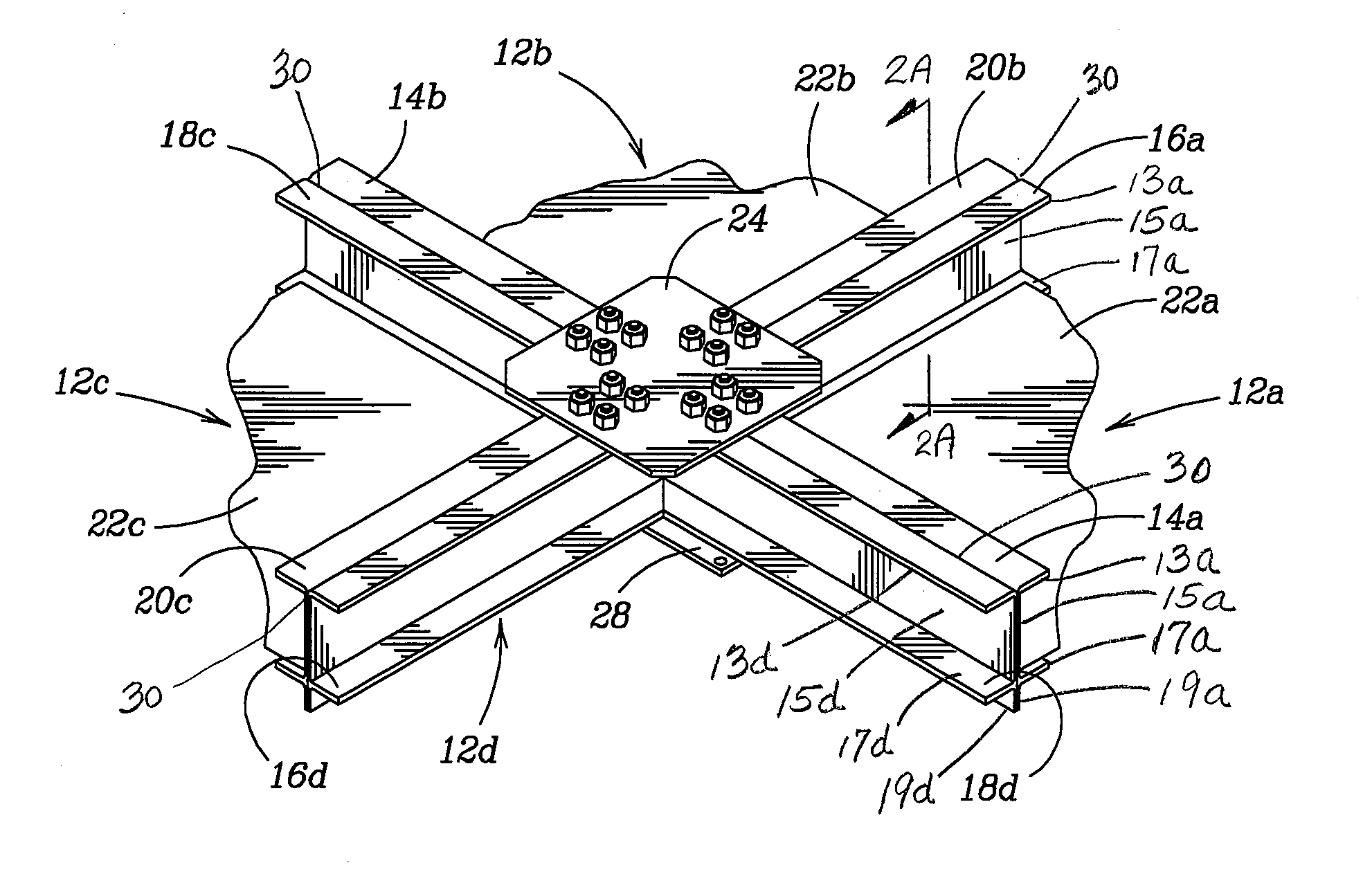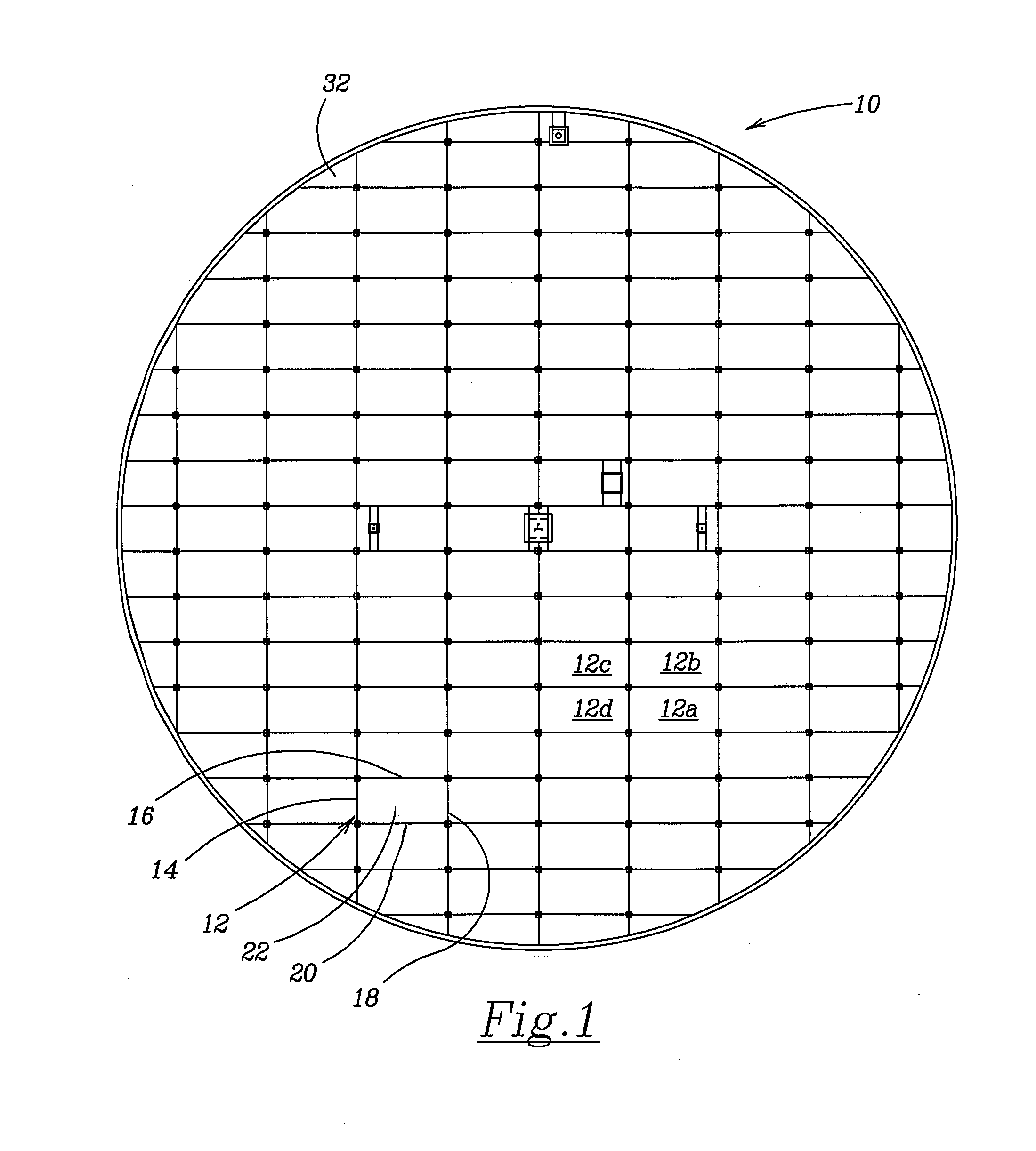Internal Floating Roof for Covering Fluid Bodies in Storage Tanks
a technology of floating roof and storage tank, which is applied in the direction of transportation and packaging, packaging, and large containers, can solve the problems of health, safety or fire hazards of liquids, objectionable odor of other liquids, sulfuric acid-containing liquids, and potentially hazardous atmosphere for stored liquids, so as to eliminate any potential for gas or vapor emissions
- Summary
- Abstract
- Description
- Claims
- Application Information
AI Technical Summary
Benefits of technology
Problems solved by technology
Method used
Image
Examples
Embodiment Construction
[0029]The following detailed description is of the best presently contemplated mode of carrying out the invention. The description is not intended in a limiting sense, and is made solely for the purpose of illustrating the general principles of the invention. The various features and advantages of the present invention may be more readily understood with reference to the following detailed description taken in conjunction with the accompanying drawings.
[0030]Referring now to the drawings in detail, where like numerals refer to like parts or elements, there is shown in FIG. 1 the internal floating roof 10 of the present invention. The internal floating roof 10 is joined together from a plurality of individual reinforced panels such as the reinforced panel 12 indicated in FIG. 1. The reinforced panel system 12 is shown as a rectangular panel system, but other geometric shapes can be utilized, e.g. triangular, square, diamond or other parallelogram, hexagonal, etc. The reinforced panel...
PUM
 Login to View More
Login to View More Abstract
Description
Claims
Application Information
 Login to View More
Login to View More - R&D
- Intellectual Property
- Life Sciences
- Materials
- Tech Scout
- Unparalleled Data Quality
- Higher Quality Content
- 60% Fewer Hallucinations
Browse by: Latest US Patents, China's latest patents, Technical Efficacy Thesaurus, Application Domain, Technology Topic, Popular Technical Reports.
© 2025 PatSnap. All rights reserved.Legal|Privacy policy|Modern Slavery Act Transparency Statement|Sitemap|About US| Contact US: help@patsnap.com



